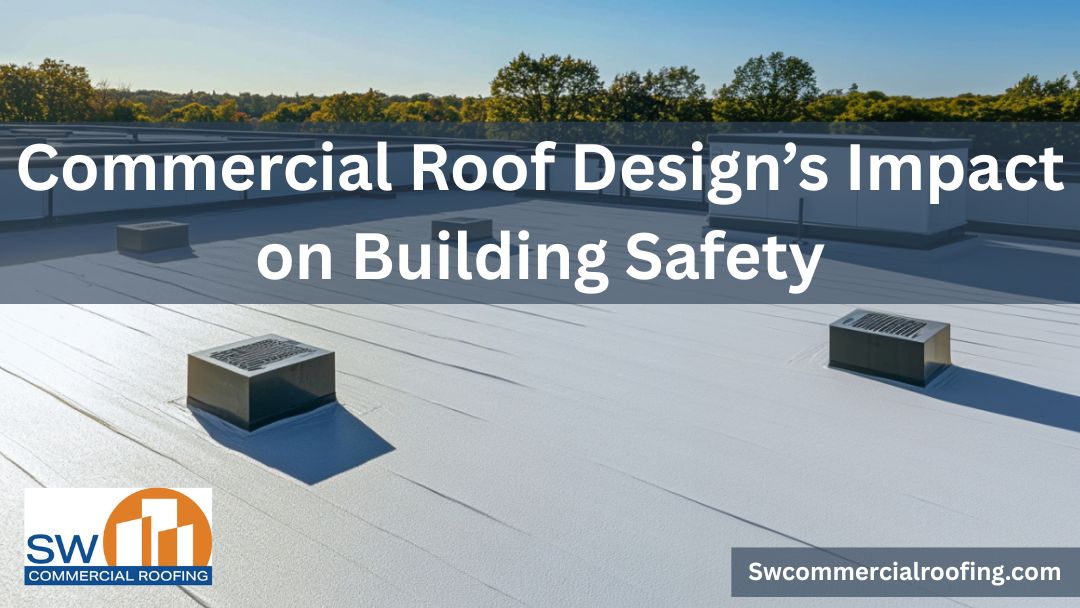How Does Roof Design Impact Commercial Building Safety in The Southwest?
Imagine a powerful desert storm sweeping through the Southwest, hammering your commercial property in California, Nevada, or Arizona with high winds and heavy rain. Will your roof withstand the onslaught, or could a flawed design lead to leaks, structural damage, or even safety hazards for your employees and tenants? For business owners and property managers, the safety of your commercial roof is more than just a maintenance issue—it’s a critical factor in protecting your investment and ensuring peace of mind.
Table of Contents
ToggleRoof design plays a pivotal role in the safety of commercial buildings. A well-designed roof can prevent catastrophic failures, protect occupants, and keep you compliant with local building codes, which are especially stringent in the Southwest due to extreme weather conditions like intense heat, monsoon rains, and high winds. Poor design, on the other hand, can lead to costly repairs, safety risks, or even legal liabilities. Understanding how elements like load-bearing capacity, drainage systems, and fire resistance contribute to safety empowers you to make informed decisions about your roofing needs.
In this article, we’ll explore these key design factors, explain how they impact your building’s safety, and offer practical insights to help you avoid common pitfalls. If you’re unsure about your roof’s design, consulting a professional roofer for a safety assessment can provide clarity and protect your business from unexpected risks.
Why Roof Design Matters for Commercial Building Safety
Commercial roofs face demands far beyond those of residential structures, especially in the Southwest’s harsh climate of California, Nevada, and Arizona. These roofs cover expansive surface areas, often supporting heavy HVAC units, solar panels, or other equipment. They also endure constant foot traffic from maintenance crews, which can stress the roofing system. Add in the region’s extreme weather—scorching summer heat, sudden monsoon rains, or high desert winds—and the design of your roof becomes critical to ensuring the safety of your building, occupants, and business operations.
Poor roof design can lead to serious consequences. A structure not built to handle heavy snow in higher-altitude areas like northern Arizona risks collapse under unexpected loads. Inadequate drainage systems, common in flat commercial roofs, can cause water pooling that leads to leaks, interior damage, or even mold growth, posing health risks to employees and tenants. Non-compliance with local building codes, such as fire or wind resistance standards, can result in costly fines or failed inspections. Some property managers might think, “My roof looks fine, so why worry about design?” This overlooks hidden flaws—cracked membranes, weak supports, or clogged drains—that may not be visible until a major failure occurs. A well-thought-out roof design anticipates these challenges, preventing costly repairs and ensuring safety for everyone inside.
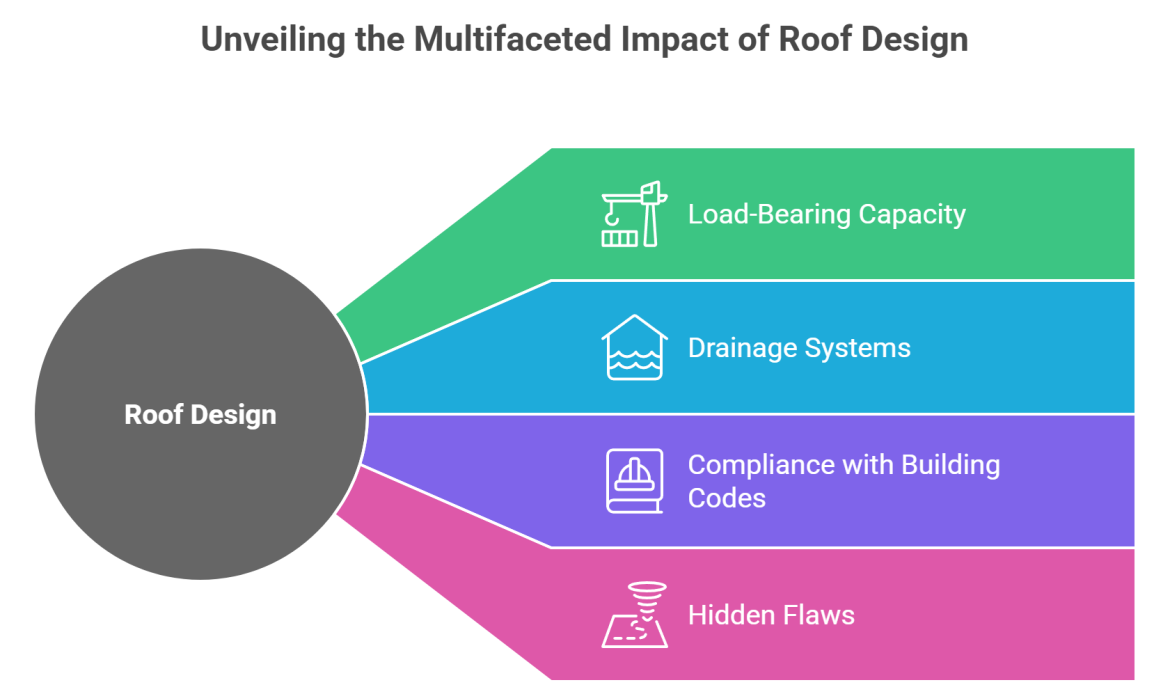
Key Roof Design Elements That Impact Safety
The design of a commercial roof directly influences its ability to protect your building and its occupants, especially in the Southwest’s challenging climate across California, Nevada, and Arizona. Below, we explore four critical design elements—load-bearing capacity, drainage systems, fire resistance, and wind uplift resistance—and how they contribute to safety, addressing common concerns property managers may have.
Load-Bearing Capacity
What It Is: Load-bearing capacity refers to the weight a roof can safely support, including snow, HVAC units, solar panels, or maintenance workers.
Safety Impact: Proper load-bearing design prevents structural collapses, which could endanger lives or disrupt business operations during heavy snowfalls or equipment installations.
Client Concern: “Will my roof handle extreme weather?” In regions like northern Arizona, where snow can accumulate even on flat commercial roofs, precise load calculations are essential to ensure the structure remains stable under stress.
Example: Flat roofs, common in commercial buildings, often need extra reinforcement in snowy areas to avoid buckling under unexpected weight.
Drainage Systems
What It Is: Drainage systems, including slopes, gutters, and drains, are designed to channel water off the roof efficiently.
Safety Impact: Effective drainage prevents water pooling, which can lead to leaks, structural damage, or mold growth that compromises indoor air quality and occupant health.
Client Objection: “Why invest in drainage upgrades?” Poor drainage can cause costly interior damage or health hazards, far outweighing the cost of proactive upgrades.
Tip: Regular drain inspections, especially before monsoon season in the Southwest, help avoid clogs and maintain safety.
Fire Resistance
What It Is: Fire-resistant design incorporates materials and features, like Class A-rated membranes, to slow fire spread and enhance safety.
Safety Impact: A fire-resistant roof protects occupants by limiting fire damage and ensures compliance with strict building codes, such as UL or FM standards, common in California.
Client Concern: “Is fire resistance worth the cost?” Beyond life safety, fire-resistant designs can lower insurance premiums and protect your property’s value.
Example: In high-risk urban areas like Las Vegas or Phoenix, Class A fire-rated materials are critical for meeting codes and minimizing fire hazards.
Wind Uplift Resistance
What It Is: Wind uplift resistance refers to a roof’s ability to withstand forces from high winds, common in desert storms across the Southwest.
Safety Impact: Strong wind-resistant designs prevent roof blow-offs, which can expose interiors to damage or endanger people below with falling debris.
Client Objection: “My area doesn’t get hurricanes.” Even moderate winds in Arizona or Nevada can lift poorly secured roofs, causing significant damage.
Tip: Properly installed fastening systems, like reinforced membranes or adhesives, enhance wind resistance and ensure long-term safety.
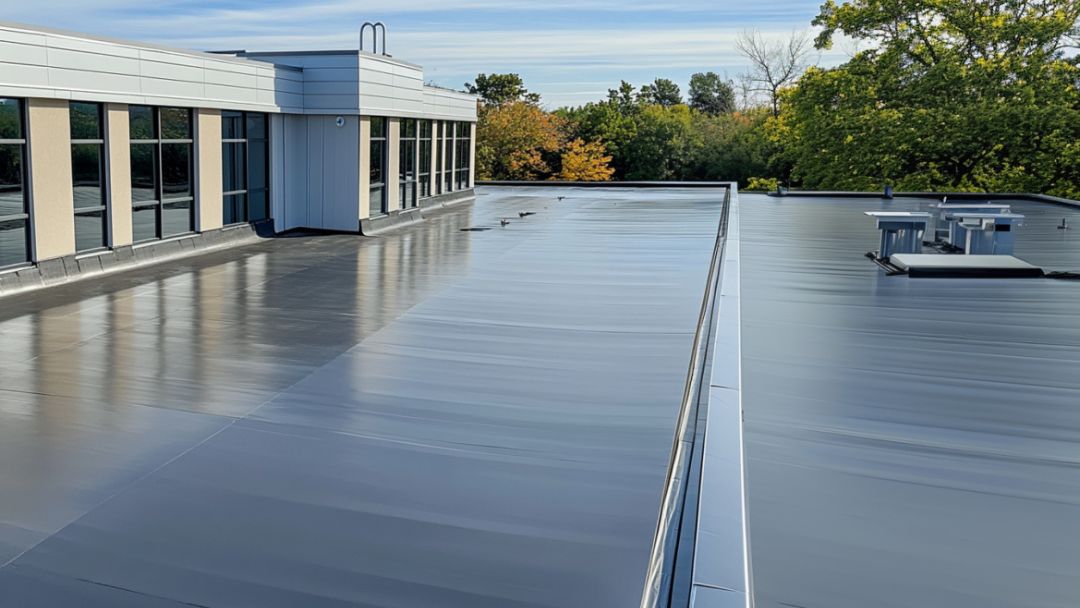
Common Roof Design Mistakes That Compromise Safety
Even a seemingly sturdy commercial roof can harbor design flaws that jeopardize safety, especially in the Southwest’s extreme conditions across California, Nevada, and Arizona. Understanding common roof design mistakes can help property managers avoid costly and dangerous issues. Here are three frequent errors that compromise safety and how they impact your building.
Insufficient Load Calculations
One of the most critical mistakes is underestimating the weight a roof must support, such as HVAC units, solar panels, or snow in higher-altitude areas like Flagstaff, Arizona. Inadequate load calculations can lead to structural weaknesses, increasing the risk of collapse during heavy snow or when maintenance crews are on the roof. This not only endangers occupants but also disrupts business operations and incurs significant repair costs.
Poor Drainage Design
Inadequate drainage systems, such as poorly placed drains or insufficient sloping, are common on flat commercial roofs. In the Southwest, where monsoon rains can strike suddenly in Nevada or Arizona, this leads to water pooling, which causes leaks, interior water damage, or mold growth. Mold can pose serious health risks to employees and tenants, while water infiltration weakens the roof’s structure over time.
Ignoring Local Building Codes
Failing to design a roof to meet local codes—such as fire resistance standards in California or wind uplift requirements in windy Nevada regions—can result in unsafe conditions and legal consequences. Non-compliance may lead to fines, failed inspections, or even insurance claim denials, leaving your business vulnerable.
Client Takeaway
These pitfalls can be avoided by working with experienced roofing contractors who understand local conditions and codes. A thorough design process tailored to your property’s needs ensures safety, compliance, and long-term durability.
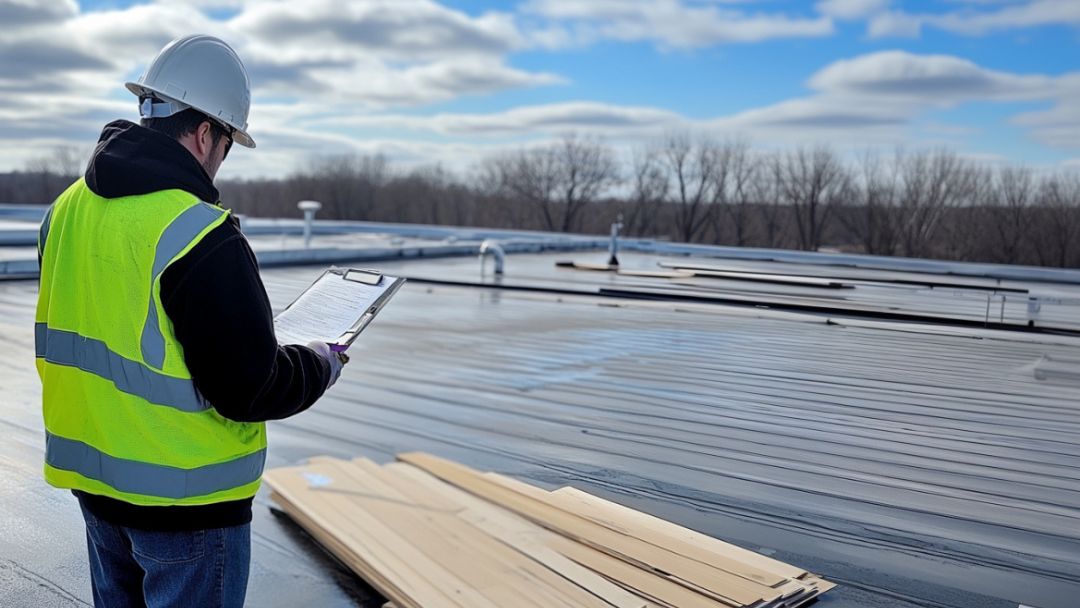
How to Ensure Your Roof Design Prioritizes Safety
A safe commercial roof starts with intentional design choices tailored to the Southwest’s unique conditions in California, Nevada, and Arizona. By taking proactive steps, property managers can protect their buildings, occupants, and investments from the risks of poor roof design. Here are four practical ways to ensure your roof prioritizes safety.
Hire Qualified Contractors
Partner with roofing professionals who have expertise and credentials, such as certifications from the National Roofing Contractors Association (NRCA) or training from trusted roofing material manufacturers. Qualified contractors understand the region’s challenges—like Arizona’s monsoon rains or Nevada’s high winds—and can design roofs to withstand these conditions while meeting safety standards.
Conduct Regular Inspections
Routine roof inspections catch design flaws before they become serious issues. For example, checking load-bearing supports or drainage systems can reveal weaknesses that might lead to collapses or leaks. In the Southwest, scheduling inspections before and after monsoon season or extreme heat waves ensures your roof remains safe year-round.
Understand Local Codes
Building codes in California, Nevada, and Arizona often include specific requirements for fire resistance, wind uplift, or snow loads, especially in higher-altitude areas. Familiarizing yourself with these regulations—or working with a contractor who knows them—ensures your roof design complies, avoiding fines and enhancing safety.
Invest in Quality Materials
While budget is a concern, choosing durable, high-quality materials pays off in long-term safety. For instance, fire-rated membranes or wind-resistant fasteners can prevent disasters while meeting code requirements. Balancing cost with durability protects your property and occupants.
Take Action
Schedule a professional roof assessment to evaluate your design’s safety. A thorough inspection can identify potential risks and provide peace of mind for your business.
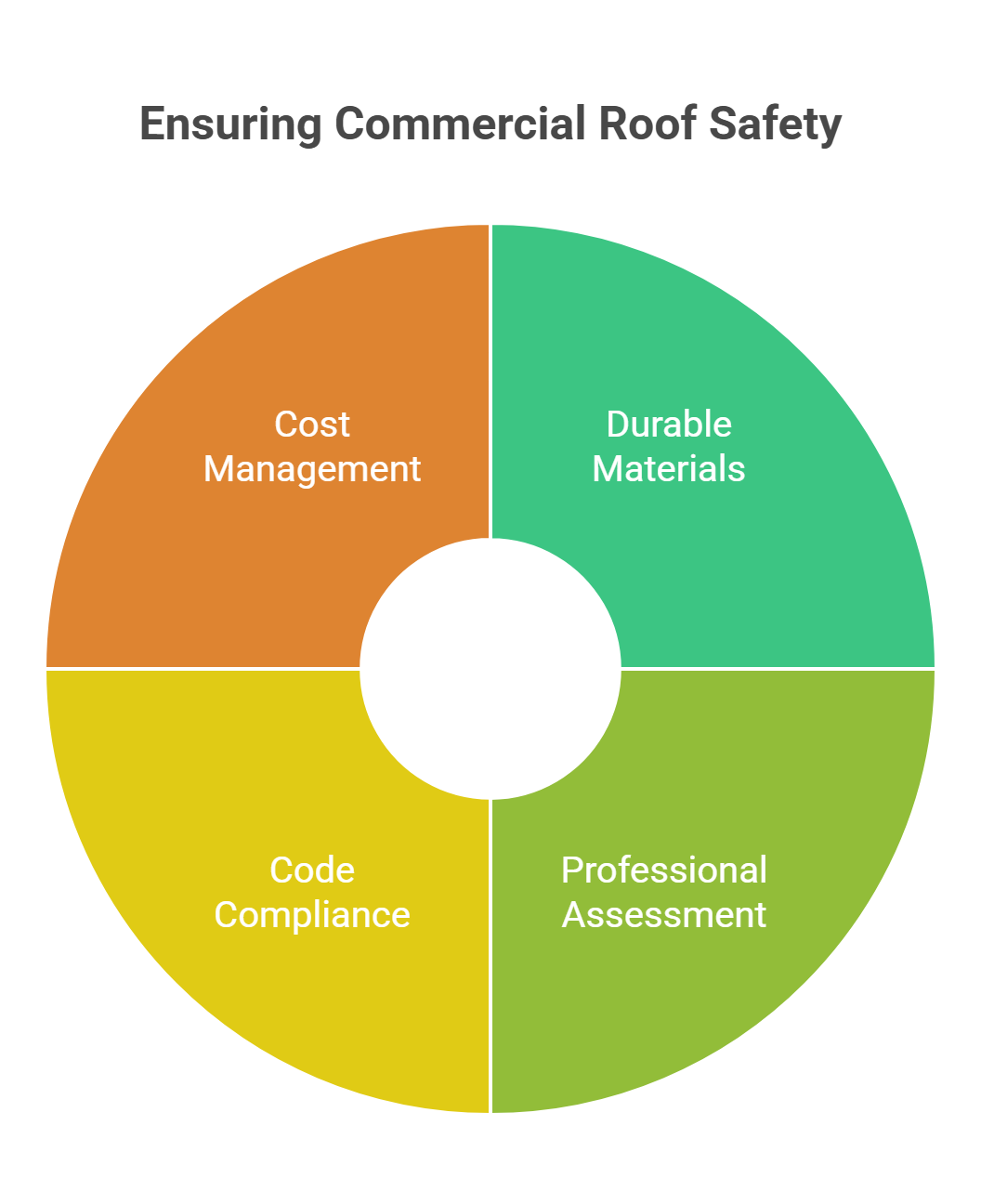
Frequently Asked Questions (FAQs)
Below are answers to common questions property managers in California, Nevada, and Arizona may have about commercial roof design and safety. These insights address concerns and help ensure your roof protects your building and occupants.
Inspect your commercial roof at least twice a year, ideally in spring and fall, to catch design flaws or wear before they escalate. In the Southwest, additional inspections after major storms—like Arizona’s monsoons or Nevada’s high-wind events—are crucial to identify damage to load-bearing structures, drainage systems, or membranes that could compromise safety.
Yes, a roof that doesn’t meet local building codes, such as fire resistance standards in California or wind uplift requirements in Arizona, may lead to denied insurance claims. Non-compliance can leave you liable for costly repairs or damages, making it essential to ensure your roof design aligns with regional regulations.
Costs vary depending on the issue—minor drainage fixes might run a few thousand dollars, while structural repairs could be significantly higher. Proactive fixes, like reinforcing load-bearing capacity or upgrading drainage, are far less expensive than emergency repairs after a collapse, leak, or mold outbreak. Addressing issues early saves money and maintains safety.
Contact A Professional Roofing Contractor For Safe Commercial Roof Design
A well-designed commercial roof is essential for ensuring the safety of your building and its occupants in the Southwest’s demanding climate across California, Nevada, and Arizona. Key design elements—load-bearing capacity, effective drainage systems, fire resistance, and wind uplift resistance—play a critical role in preventing structural failures, water damage, and code violations.
By addressing these factors, you protect your employees, tenants, and investment from costly risks like collapses, leaks, or fines. Some property managers may hesitate, thinking, “Redesigning or upgrading my roof seems expensive.” However, investing in a safe roof design now prevents far greater expenses from emergency repairs, mold remediation, or insurance disputes, while providing peace of mind that your property is secure against the region’s extreme weather.
Proactive steps like hiring qualified contractors, scheduling regular inspections, and using quality materials ensure long-term safety and durability. Don’t leave your roof’s safety to chance—contact a professional roofing contractor for a free roof safety assessment to evaluate your design and protect your business from unexpected risks.

